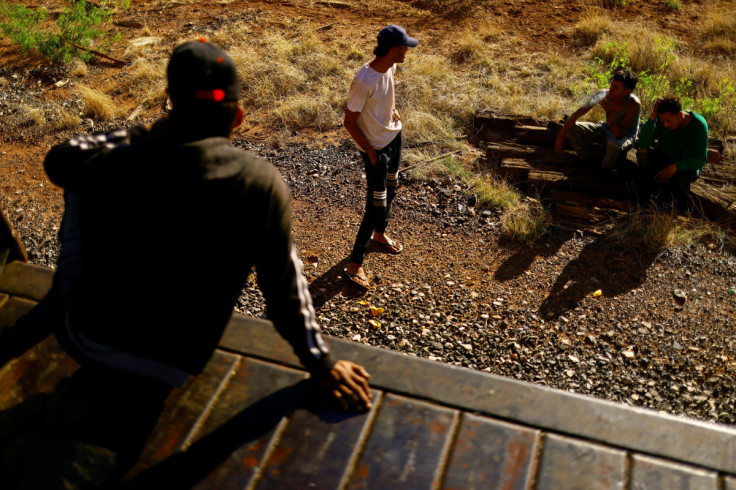Migrants Risk Life And Limb To Jump Mexico Trains In Rush To Border

Thousands of migrants in Mexico have been clambering onto dangerous freight trains rumbling northward in a scramble to reach the U.S. border by the time the United States ends a tough migration policy later this week.
In recent weeks, up to several hundred people have boarded daily, activists and officials say, with many setting off atop train cars pulling out from a brief stopping point at a garbage dump in Huehuetoca, a town north of Mexico City.
The rush has intensified as news circulates about the end on Thursday night of Title 42 - a COVID-era policy that since 2020 has allowed the U.S. to rapidly expel migrants back to Mexico.
The U.S. is preparing for a jump in border crossings when it goes, piling more pressure on authorities already grappling with record levels of illegal entry.
Many migrants want to reach the border as soon as possible, although they are unsure what the rules will now be. Washington has said it will finalize a new regulation this week that will deny asylum to many.
"Will it be easier? I doubt it," said Romario Solano, 23, a Venezuelan, while waiting for hours in baking sun near the trash-strewn rail tracks in Huehuetoca. "We know that as migration has increased, tougher measures have been taken."
Solano acknowledged that riding the train was dangerous, but said he did not have money for a bus.
For years, mainly Central Americans have crisscrossed Mexico on cargo trains, dubbing them collectively "La Bestia" (The Beast) due to the risk of injury, even death, if they fell off. Migrants are also vulnerable to gangs, cold nights and sweltering days.
The latest wave of people aboard "La Bestia" are largely poor Venezuelans, including families with small children, mostly aiming to reach Ciudad Juarez, opposite the Texan city of El Paso.
Many climb narrow ladders to sit on roofs; others huddle inside empty boxcars, and spread blankets over gravel, steel bars and other building materials to ride in open-air wagons.
"There are hundreds of people arriving every day," said migrant activist Guadalupe Gonzalez last week in the central city of Irapuato, where the train makes a stop. "We hadn't seen so many migrants passing through here like this before."
During the past month, as many as 700 people were trying to board per day, she said.
Seated on a log near the Huehuetoca garbage dump, Venezuelan migrant Allender Ruy played voice messages on his phone from a friend warning him about the several-day journey ahead: "Brother, when you get the train, bundle up ... it's very cold, terribly cold."
After being deported to Venezuela earlier this year from Panama while en route to the U.S., Ruy was hoping for a second shot. "I have to get there, at the latest, before the 11th," he said.
On the cracked screen of his smartphone, fellow Venezuelan Franklin Cuervas watched a Tik Tok video captioned "the border is getting tougher." Two of his brothers in the U.S. had urged him to arrive before May 11 to avoid crowds of other migrants.
"They say it would be better (to arrive) before, because more people are coming, people who want to get in," he said.
A family of 10, including a 1-year-old girl and several children who were coughing, retreated in disappointment to the shade of one of the few trees in the hot desert terrain when they realized a clattering train was not the one they wanted.
"We're a bit anxious ... supposedly there will be problems before the 11th," said Alejandro Mavo, 44, who traveled with his wife and five children from Venezuela. "We're barely on time."
© Copyright Thomson Reuters 2024. All rights reserved.





















